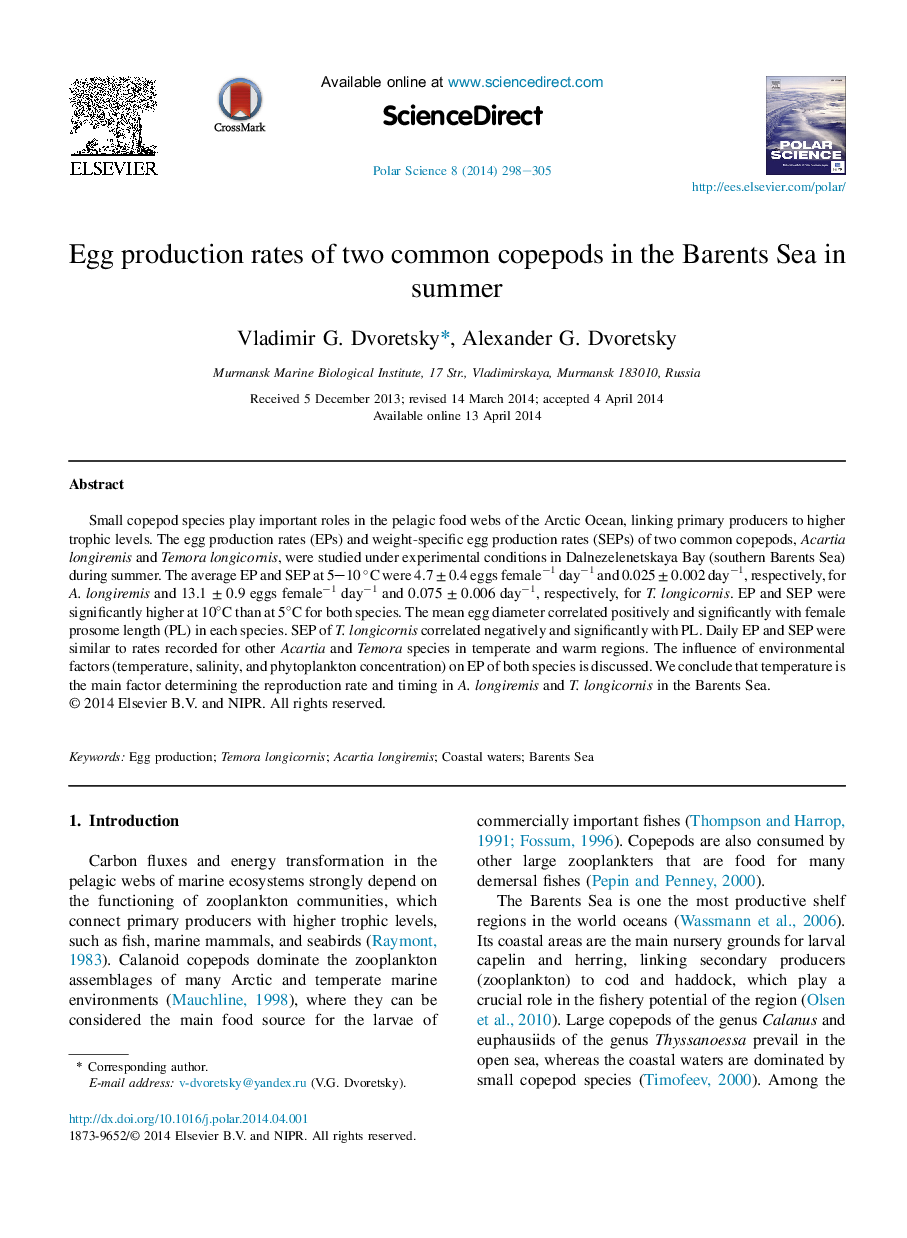| Article ID | Journal | Published Year | Pages | File Type |
|---|---|---|---|---|
| 4683181 | Polar Science | 2014 | 8 Pages |
Small copepod species play important roles in the pelagic food webs of the Arctic Ocean, linking primary producers to higher trophic levels. The egg production rates (EPs) and weight-specific egg production rates (SEPs) of two common copepods, Acartia longiremis and Temora longicornis, were studied under experimental conditions in Dalnezelenetskaya Bay (southern Barents Sea) during summer. The average EP and SEP at 5–10 °C were 4.7 ± 0.4 eggs female−1 day−1 and 0.025 ± 0.002 day−1, respectively, for A. longiremis and 13.1 ± 0.9 eggs female−1 day−1 and 0.075 ± 0.006 day−1, respectively, for T. longicornis. EP and SEP were significantly higher at 10°C than at 5°C for both species. The mean egg diameter correlated positively and significantly with female prosome length (PL) in each species. SEP of T. longicornis correlated negatively and significantly with PL. Daily EP and SEP were similar to rates recorded for other Acartia and Temora species in temperate and warm regions. The influence of environmental factors (temperature, salinity, and phytoplankton concentration) on EP of both species is discussed. We conclude that temperature is the main factor determining the reproduction rate and timing in A. longiremis and T. longicornis in the Barents Sea.
